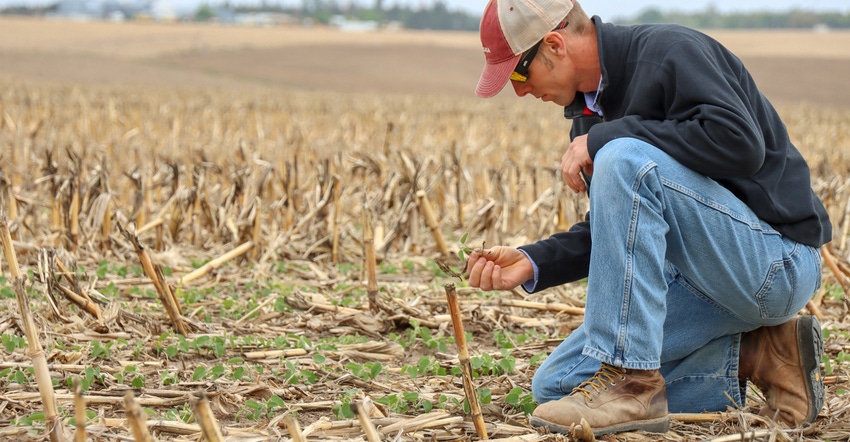July 6, 2022

I am a fifth-generation farmer who grows corn and soybeans in Boone County, Neb., using 100% no-till. During my career as a farmer, agriculture has transitioned from being managed by the acre to the square foot.
For example, my planter has row shut-offs to eliminate planting a spot twice, but I can also set up if I want to plant to the end rows or stop a few inches short, so each plant has the best chance possible of reaching its potential.
Fertility evolution
Fertility management has evolved in this same manner. The majority of my phosphorus and micronutrients are applied as dry fertilizer broadcast-spread in early spring before planting. Variable rates are applied using prescriptions based on 2.5-acre grids.
We take the grid samples ourselves, helping ensure accuracy and repeatability each time a field needs to be tested. My wife doesn’t appreciate running a soil probe with me when it is the year to sample the fields again, but this is an essential part of the crop production process. These 64 grid points on each 160-acre field will set the stage for the next several growing seasons.
My approach to nitrogen management is simple, but requires a lot of steps. I try to apply this essential nutrient to my corn crop as many times as is practical, while trending for less total pounds while growing more total bushels.
Thirty to 45 pounds of liquid nitrogen are applied with the planter pass, and about the same amount goes on with preemergent herbicide application. Three separate passes fertigating 30 pounds each make up the balance of the corn needs. These passes are timed through my center pivots around the end of June, middle of July and the last one shortly after brown silk.
Weekly leaf-tissue tests help guide the timing and total amount of nitrogen that gets applied to the crop. By applying nitrogen later in the growing season, I more closely meet the timing that the corn crop requires.
Cover crop tool
Another tool in my nutrient management strategy is using a cereal rye cover crop planted after harvest and before the next corn crop. The rye takes in any excess nitrogen, and by planting green and terminating it, the biomass accumulated not only helps with weed control, but also takes until midsummer to break down and release these nutrients into the growing crop.
To refine my nutrient management skills and improve my business acumen, I recently went through the Nebraska LEAD Program. As a fellow, I was able to network with growers in all areas of the state and gain a better understanding of their crop management. The program’s focus on state, national and international issues has challenged my thinking.
I now understand it is up to us as producers to make sure our crop production techniques are aligned with the needs of the future. Consumers are starting to demand doing a better job with our resources, and producers need to take note.
Krohn is a graduate of LEAD Class 39.
You May Also Like




